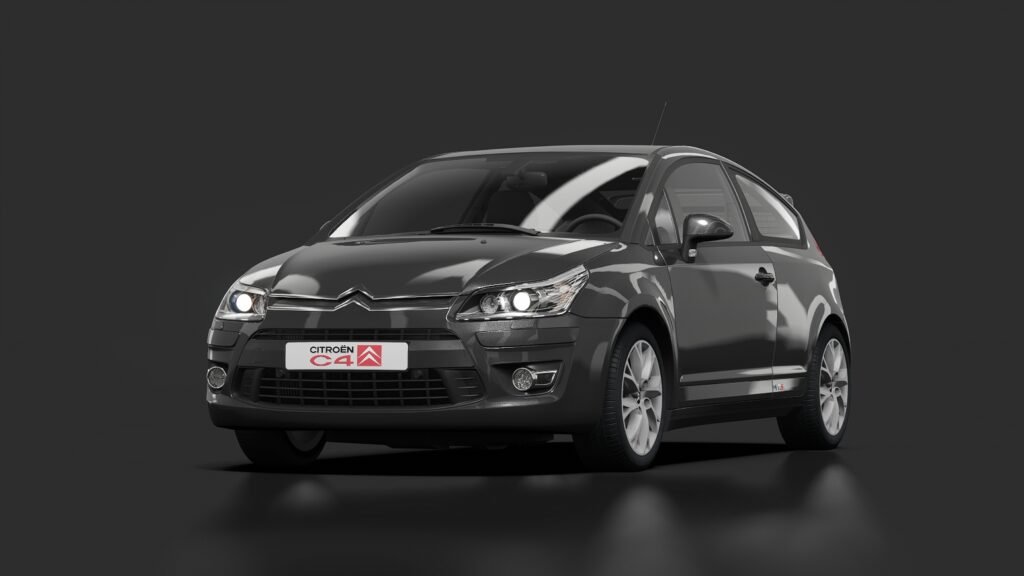
{{ galleryProps.activeIndex + 1 }}/1
Descrição
To cope with the market, Citroën was dedicated and committed to building a new model that would appeal to many customers. At the Geneva Motor Show in 2004, a concept from the Citroën line's definitive made-bodied coupé revealed the willingness of the French company to employ it in competition. The car was finally unveiled at the 2004 Paris Motor Show, after being officially launched to retail on September 2, 2004. However, that version was a more domesticated hatchback...
To cope with the market, Citroën was dedicated and committed to building a new model that would appeal to many customers. At the Geneva Motor Show in 2004, a concept from the Citroën line’s definitive made-bodied coupé revealed the willingness of the French company to employ it in competition. The car was finally unveiled at the 2004 Paris Motor Show, after being officially launched to retail on September 2, 2004. However, that version was a more domesticated hatchback coupé or five-door.
Design
Hatch (pre-facelift)
Interior
The C4’s design was created by a team that included Donato Coco, Jean Pierre Ploué and Bertrand Rapatel.[5][failed verification] Building on the floor of its cousin, the Peugeot 307, the C4 was immediately made available in two body variants: five-door hatchback and three-door coupé. The front is common to both versions, with the grille formed from virtual extensions of the central crest. The saloon is much more rounded and features softer shapes, so they can boast a Cd of just 0.28, while the coupe is more angular, with a rear split into two parts, including lights.
The rear window of the coupé is reminiscent of the older Honda CR-X from the early 1990s, as well as the last three-door Mazda 323C. These two versions of the C4 Picasso are more detached, taking over the grille of the saloon and coupe, but the cut of the headlamps are different, aesthetically combining corners and curves. The rear lights incorporate the design as in those of the saloon but were adapted to the different shape of the body. Internally, the dashboard features a central instrument panel that centralizes all heating and cooling controls, audio, and a satellite navigation screen. The instrument panel contains digital and analog displays of the speedometer, petrol levels, and other gauges. Lighting can be customized to change color from white to blue.
The revolution, however, is placed in canonical position, behind the wheel. The latter is multifunctional and characterized by having a fixed hub. The cabin is equipped with numerous storage compartments and the luggage compartment is regular in shape, with a capacity of 352 liters, increasing to 1,200 after lowering the rear seat backrest. The load threshold is quite high, hitting loads of heavy objects. There are laminated side windows and exterior mirrors, with a casing specially designed to prevent wind noise and improve the comfort inside.
The saloon version is manufactured in Argentina, where it is sold alongside the five-door and the imported three-door version. The C4 Saloon is exported from there to Brazil and Hungary as the C4 Pallas and to Spain, Turkey, and Greece as the C4 Sedan. A longer four-door saloon version with a different rear end is also built and sold in China as the Citroën C-Triomphe. A panel van based on the coupé bodyshell is available in some markets, including Ireland.
Technology
A major selling point of the C4 was its extensive use of technology. For example, the car features the “lane departure warning system” (only in the top-of-the-range “exclusive” model), which alerts the driver if he or she crosses a road marking without using the turn signals; directional headlights; perfume dispenser integrated into the ventilation system; translucent dashboard; transparent glass roof; electronic stability program (ESP), and a fixed steering wheel hub, which lets the driver operate several functions of the car without removing their hands from the wheel.
The fixed hub also allows for the first production use of a “shaped” driver airbag. Because the hub maintains a constant position, the airbag can be optimally shaped to spread the load across the greatest possible area of the driver’s body in a collision, thus reducing the chances of serious injury. In addition, the car features an innovative centrally mounted translucent LCD speedometer display that remains clearly visible in all lighting conditions.
The car’s in-car entertainment, integrated into the car’s information system via VAN bus, is not Digital audio broadcasting (DAB) ready. MP3 playback is supported by the entry level audio system and high-end audio, with double-layer sound-insulated windows and integrated navigation system available as extras. In September 2007, a USB box accessory[6] (Ref: 9702.EZ) was released to enable full iPod connectivity with the standard RD4 radio.
The C4 does not feature Citroën’s Hydractive suspension, which is reserved for higher class models, such as the C5 and C6. The Picasso version can feature a pneumatic rear suspension. The C4 breaks with the past on other fronts, in particular by removing the rear autodirezionale solution, used up to that time on the Xsara and ZX. The suspension is the usual type MacPherson strut front suspension with coil springs, while the rear has interconnected wheels with torsion beam and torsion bars. The braking system includes ventilated discs on the front, and rear solid discs with ABS and ESP (not standard versions with basic fittings). The steering is rack and pinion with electro-hydraulic power steering.
Download Link
Recursos
•
ABS
•
Controle de Tração
Simulador:
Assetto Corsa
Marca:
Citroen
Modelo:
C4
Potência:
149 cv
Torque:
240 nm
Peso:
1.225 kg
Peso/Potência:
8,22 kg/cv
0 - 100:
7,40 s
Cores:
4
Tração:
Dianteira - FWD
Autor:
101Creative, VRDRIVING
Versão:
1.01





![Toyota Mark II [JZX100] Kocho](https://brasilsimulatormods.com/wp-content/uploads/2025/02/preview-229-335x186.jpg)




